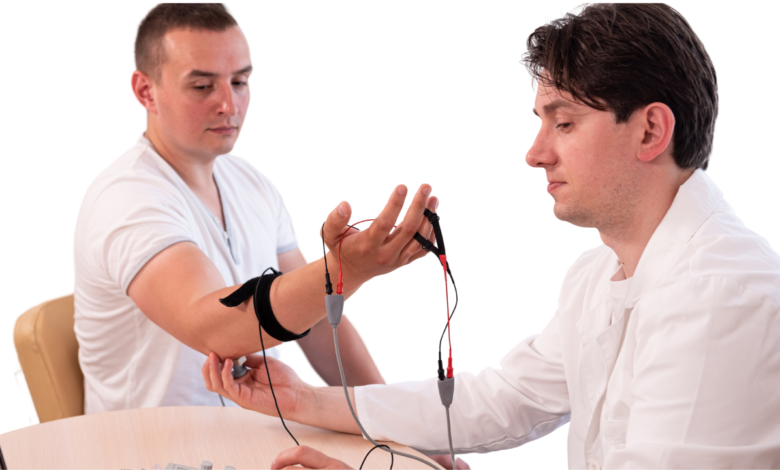Electromyography (EMG): To assess the function of the muscles involved in defecation.
Electromyography (EMG): A Comprehensive Guide

What is Electromyography (EMG) ?
Electromyography (EMG) is a diagnostic test used to assess the electrical activity of muscles. It can help evaluate the function of muscles involved in various activities, including defecation.
Why Electromyography (EMG) is required?
An EMG of the pelvic floor muscles can be used to:
- Diagnose neuromuscular disorders: Conditions like fecal incontinence or constipation can be caused by problems with the muscles that control bowel movements.
- Evaluate muscle strength: EMG can help determine the strength and function of the pelvic floor muscles.
- Monitor treatment progress: It can be used to track the effectiveness of treatments for pelvic floor muscle dysfunction.
which are the method of Electromyography (EMG) ?
During an EMG, fine needles are inserted into the muscles being tested. These needles record the electrical activity of the muscles as they contract and relax.
who should go for Electromyography (EMG) ?
Individuals who may benefit from this test include:
- People with fecal incontinence or constipation.
- Patients with neurological conditions that may affect bowel function.
- Those undergoing evaluation for pelvic floor muscle dysfunction.
What are the results of Electromyography (EMG) ?
An EMG can help identify abnormalities in muscle activity, such as:
- Muscle weakness: The muscles may not be generating enough electrical activity.
- Muscle denervation: The muscles may be losing their connection to the nerves.
- Muscle fasciculations: These are involuntary muscle twitches.
What are the components of Electromyography (EMG)?
An EMG typically involves:
- Preparation: You may be asked to avoid caffeine and stimulants before the test.
- Needle insertion: Fine needles are inserted into the pelvic floor muscles.
- Muscle contraction: You will be asked to contract and relax the muscles while the electrical activity is recorded.
- Interpretation of results: A healthcare provider will analyze the EMG results and discuss the findings with you.





